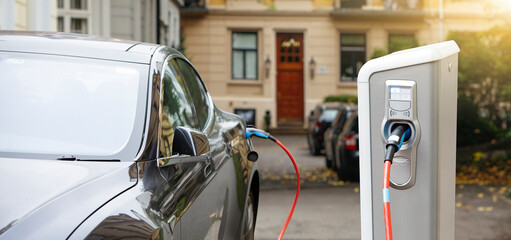Tips on defining the Sales Price for EV Charging station rentals 💡
One of the questions most Killswitch.cc users ask is:
"How much should I charge for using my EV chargers?"
Indeed, setting the sales price is one of the most important decisions that everyone selling something needs to take.
And the "how much" question doesn't have an easy answer, regardless of the business or activity....
In this article we will try to shed some light on this topic so that you can set the best price for the usage of your charging stations. Or at least, to have some sort of logical rationale behind it 😉.
Before we continue, we need to write a disclaimer: regardless of the tips we share with you in this post, or the suggestion you got from your uncle - or from that guy at work, please remember that in Killswitch you have the freedom to set your sales price freely, meaning the ultimate decision is... on you 🤑.
Now going to the point:
There are many strategies in defining the sales price for a product or service. From the simple "sales guy intuition" 🤓 to complex mathematical models 📈.
Not wanting to bore you with a full degree on economics, let's dive into the typical (most used) price setting strategies:
1. Cost-plus pricing
In this strategy, you set your price by adding a markup (margin) to your cost price. To calculate your cost price, you may want to consider:
- Your electricity cost (per Kwh)
- The EV charging station amortisation (or hardware wear cost) - optional
Let's say your electricity cost is of 0,20€ per Kwh and your charger amortisation is 0,05€ per Kwh. If you want to have a markup margin of (i.e.) 40%, you can set your sales price at 0,35€ per Kwh (0,25 x 1,40).
Now, if you your charger has a nominal power of 7,2 Kw your sales price would be of 2,52€ per hour (or 0,042€ per minute). Remember: in Killswitch you define your sales price per usage duration - minute, hour or day.
2. Competitive pricing
In this strategy, you set your sales price according to the price your competitors charge in your area.
Let's say that in your area there are other EV charging stations charging i.e. 0,40$ per Kwh.
You might decide to set your price at the same price (i.e. 2,88€ per hour for a 7,2 Kw charger), or a little bit less (if you want to be more competitive) or a little bit more (i.e. if your charger is in a dedicated place such as an Hotel).
3. Penetration pricing
With this strategy you set a low price to enter a competitive market (i.e. if in your area there is a very high offer of EV chargers) and raise it later.
This strategy should not be used in areas with scarce offer, but the opposite.
4. Price skimming
As opposed to the Penetration Pricing, this strategy is to set a high price and then lower it as the market matures or get more competitive.
This strategy can be used when offer in your area is scarce or when your charging stations are in reserved locations, such as hotels, guest houses or high-ways.
5. Value-based pricing
Last, but not least, the Value-based price strategy is when you set your sales price based on your perception of what the customer is expecting to pay for your service (in this case for charging his car).
This is an interesting pricing strategy, but also quite subjective, because you need to put yourself in your customer's shoes and think "how much am I willing to pay for charging my car at this location?".
Looks like in this strategy, it al comes down (again) to the "how much?" question 😁.
One final note
Regardless of the strategy ♟️ you follow, usually the best approach when setting your sales price is not to consider just one but a mix of strategies 🎛️.
And of course one very important tip is also to never forget... your feeling!
Useful links
- Killswitch - QR Payment System for EV Chargers
- View Killswitch Setup Guide
- Contact Killswitch Support for questions or advise








This comment has been removed by the author.
ReplyDeleteWhen choosing an EV charger, understanding the types can make a big difference in convenience and cost. Level 1 chargers work well for basic, overnight charging at home, while Level 2 chargers are faster and suit daily users with higher charging needs. For on-the-go drivers, DC fast chargers are ideal, providing quick energy boosts on longer journeys. The right ev charger type choice can save time, lower charging costs, and reduce range anxiety, making electric vehicle ownership smoother and more enjoyable. Reliable access to suitable chargers is key to fully benefiting from EVs’ eco-friendly and cost-saving potential.
ReplyDelete